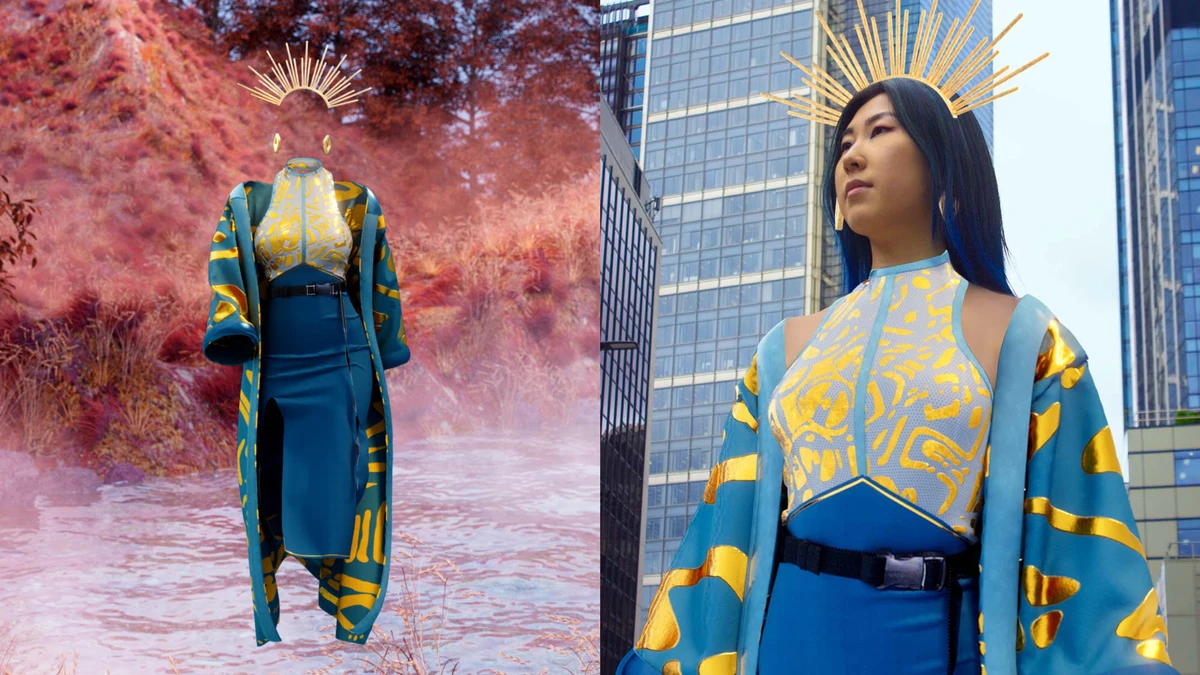How Virtual Clothing Is The Solution To Cloth Wastage
The fleeting nature of fashion may seem a strange match for blockchain technology. However, the fashion industry is figuring out ways to use, Web3 technologies and other digital tools to cut waste and advance fashion.
In the emerging “phygital” fashion market, a blockchain-enabled circular fashion platform, where customers purchase both a physical fashion item and its digital “twin,” intended to be collected or worn by avatars in virtual environments like the metaverse, Italian company Lablaco is collaborating with fashion houses and brands to digitize their collections.
Lorenzo Albrighi and Eliana Kuo founded Lablaco in 2016. A company with the core notions of implementing a fashion ecosystem that self-regenerates. Albrighi and Kuo had experience in high-end fashion, but they wanted to raise the industry’s sustainability standards and spread the concept of “circular fashion,” which involves creating clothing in a way that produces less waste. Together, they established the Circular Fashion Summit in 2019, and Lablaco collaborated with retailer H&M to develop a blockchain-based clothing rental service in 2021. Since day one, Lablaco has been working on making “digitised circular fashion” a reality.
According to an article on Brytehall, Lablaco launched the first blockchain-powered phygital NFT vintage designer clothing pop-up at Lane Crawford in Hong Kong back in 2019, when NFTs were not a mainstream term yet. This year with the Sozzani’s project, the 360° use cases across IRL/URL (AR/VR) have been delivered, and we are very happy to see that people are really excited about this!
Africa: Future Styles - Could Virtual Clothes Reduce the Damage of Fast Fashion? - allAfrica.com
Bringing fashion into digital spaces has helped produce data that is essential in the efforts to transition to circular fashion. When a physical object is sold again, the digital equivalent is added to the new owner’s digital wallet because, according to Lablaco’s model, physical and digital things remain connected even after a sale. Because of the transparency of blockchain technology, the item’s creator can track the item’s after-sales path and the new owner can be sure of its authenticity.
In a statement by Albrighi, “If you don’t digitize the product itself, you cannot have any data to measure, and you don’t know what’s the impact of the fashion.”
According to a BBC report, the textile and factor sector generates about 92 million tons of waste each year, and digital fashion could play a part in cutting that number of waste. According to Kuo, virtual environments could serve as a sort of testbed for the real world. For instance, a designer might publish a piece of digital clothing in the metaverse in 10 different colours, and then use sales information to determine which colours to utilize for the real-world version. Kuo claims this has the potential to turn into an on-demand model automatically, which really can cut down a lot of waste in fashion.
According to Albrighi, trying on virtual clothing could lessen the amount of clothing that is returned in the real world. He continues by saying that holding fashion shows in virtual worlds removes the need for travel in the fashion industry. Both measures have the potential to lessen the carbon footprint of the sector.
However, Albrighi says that incentivizing designers is essential if these inventions are to become widely used. The phygital model offers a way to “make less and actually earn more” by allowing companies to get royalties when an item is resold over the course of its lifetime. It’s the start of a completely new industry, he claims.









